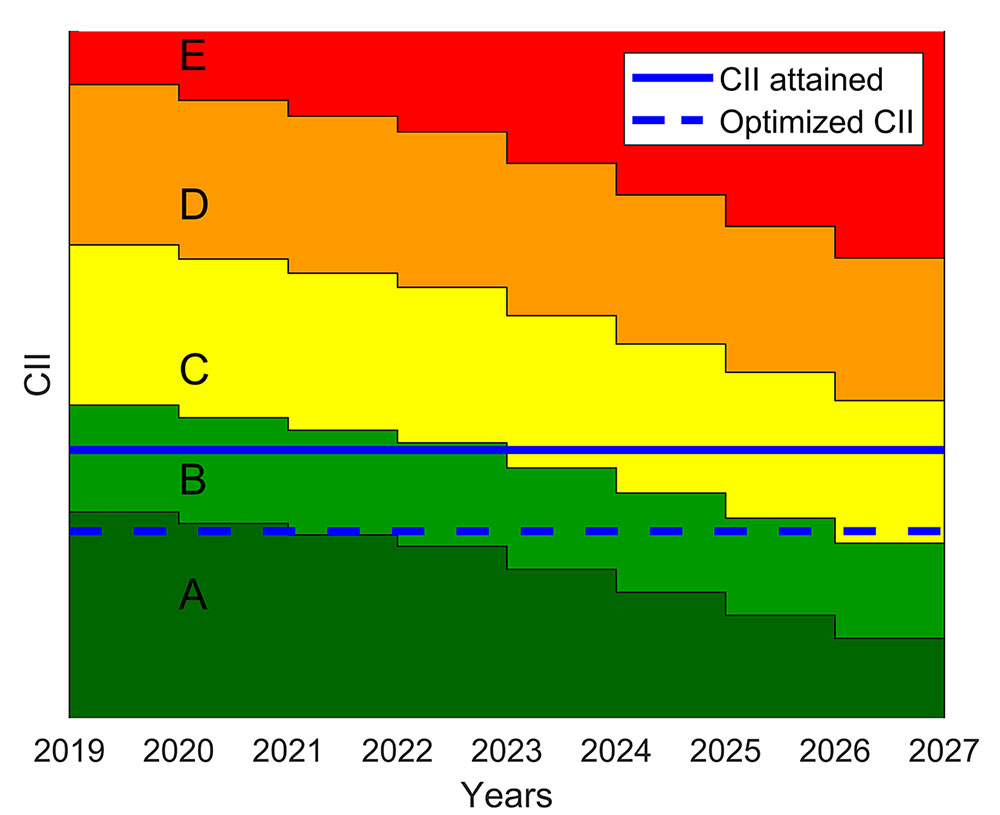Optimising voyages would boost CII ratings, says study
Analysis of Marubeni bulk carriers for 2021 voyages has shown that fuel consumption and CO2 emissions could have been reduced by up to 7.3%, with CII ratings improved by an average of 5%-6%
Optimising voyages with the aid of simulation software could improve CII ratings enough to move ships up to the next level or maintain their rating for longer
VOYAGE optimisation software could reduce fuel consumption and emissions enough to enable vessels to improve their Carbon Intensity Indicator (CII) ratings and maintain their ratings for two or even three years, according to an industry study.
Performance analysis of bulk carriers owned and operated by Japan’s Marubeni, and conducted by Finnish maritime software and data analysis business NAPA, found that fuel consumption and carbon dioxide emissions could have been reduced by up to 7.3%, with CII ratings improved by an average of 5%-6%.
The methodology was verified by ClassNK, which also provided advice on the simulations, verified the calculated values, and confirmed the results.
The joint research was carried out using NAPA’s ship performance model and voyage simulation tools. It used data on all voyages, weather, and ocean conditions throughout 2021 for the Marubeni bulkers.
Each voyage was “retro-optimised” while maintaining the same departure and arrival times.
A joint statement said the study highlighted the importance of optimising voyages to improve a vessel’s rating under the International Maritime Organization’s CII regulation.
Boosting a vessel’s CII rating by 5%-6% would, in many cases, enable it to move up one rank, for example from B to A.
Vessels could remain in the same category for longer as the requirements for each CII category gradually become stricter, forcing ships to reduce their emissions over time.
NAPA has been working with Marubeni and several other Japanese owners for some time, said Naoki Mizutani, managing director of the company’s business in Japan.
“Shipowners are struggling with CII and EEXI,” he said, adding that the owner’s own customers are seeking improvements, so Marubeni was keen to understand the value of this analysis. The response has been very positive as the study provided new insights.
“CII requires both hardware and voyage optimisation, plus collaboration between the owner and charterers. NAPA is working with other Japanese companies, and has carried out similar studies, which haven’t yet been published. We are also doing voyage simulation analysis for rotor sails with Japanese shipyards as well as shipowners.”
NAPA plans to release a joint publication later this year with a shipyard and shipowner in Japan, looking at the combined benefits of many different technologies.
Yoshimichi Sasaki, general manager of Digital Transformation Center at ClassNK, said CII implementation posed challenges to shipping companies not only in ensuring compliance, but also in planning and managing GHG emissions from their fleet. This directly impacted their competitiveness.
“Visualising ship emissions should be a key initial step to envisage the way for optimized GHG management systems. The study, based on actual voyage data, has successfully demonstrated the value of the simulation in generating insights. ClassNK intends to use the analysis to enhance its certification service range, which is responding to decarbonisation trends and the advancement of digital technology.”


